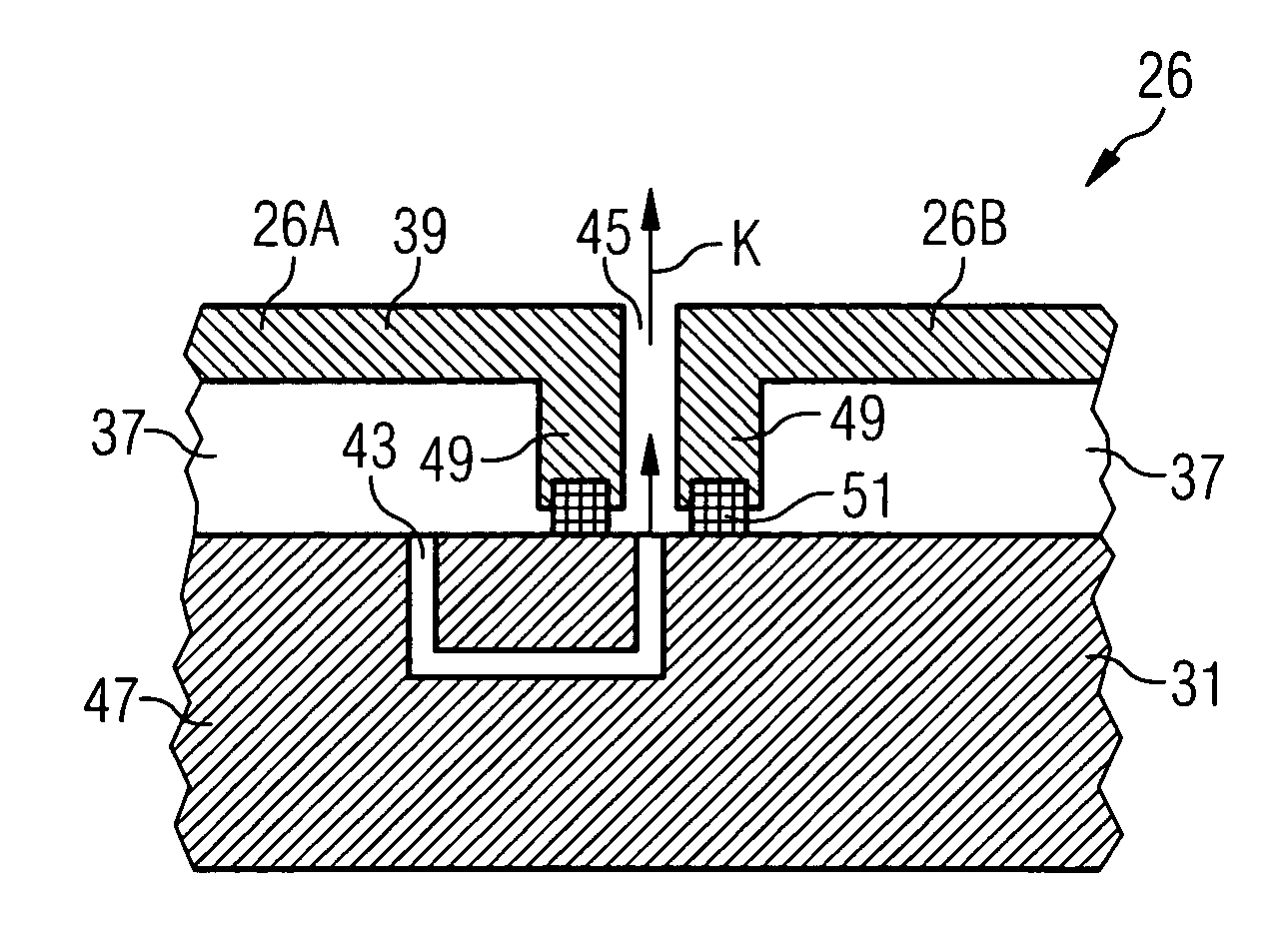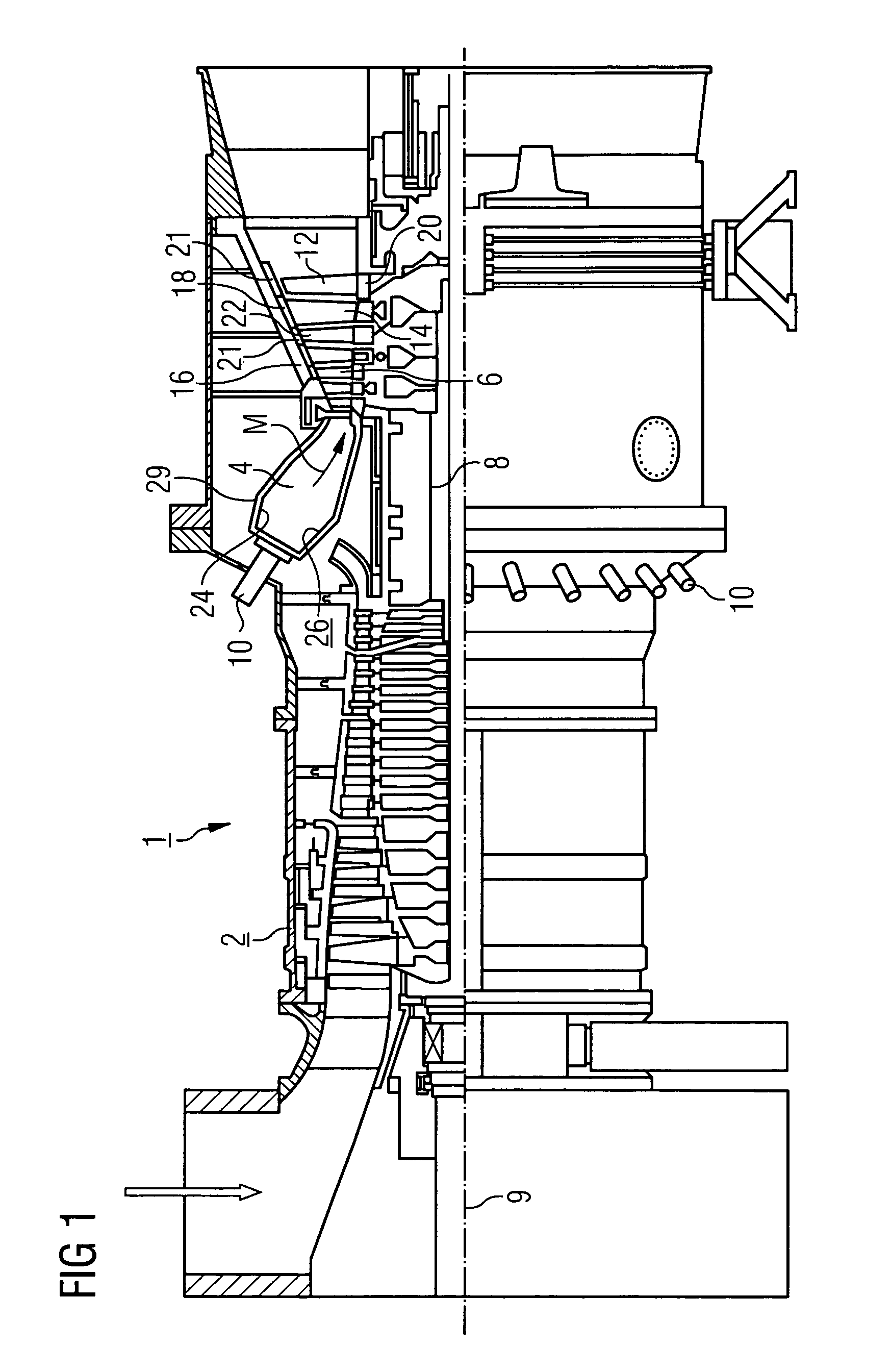Heat shield arrangement for a component guiding a hot gas in particular for a combustion chamber in a gas turbine
a technology of hot gas and heat shield, which is applied in the direction of mechanical equipment, machines/engines, light and heating apparatus, etc., can solve the problems of excessive cooling air consumption, more cooling air used, and overall efficiency of the unit, so as to prevent residual coolant leakage, reduce coolant consumption further, and simple but effective measures
- Summary
- Abstract
- Description
- Claims
- Application Information
AI Technical Summary
Benefits of technology
Problems solved by technology
Method used
Image
Examples
Embodiment Construction
[0028]The gas turbine 1 according to FIG. 1 has a compressor 2 for the combustion air, a combustion chamber 4 and a turbine 6 to drive a compressor 2 and a generator or machine (not shown in further detail here). To this end the turbine 6 and compressor 2 are disposed on a common turbine shaft 8 also referred to as a turbine rotor, to which the generator or machine is also connected, and which is supported such that it can be rotated about its central axis 9. The combustion chamber 4 configured in the manner of an annular combustion chamber is fitted with a number of burners 10 to burn a fluid or gaseous fuel.
[0029]The turbine 6 has a number of rotating blades 12 connected to the turbine shaft 8. The blades 12 are disposed in a rim shape on the turbine shaft 8, thereby forming a number of rows of blades. The turbine 6 also has a number of fixed vanes 14, which are also fixed in a rim shape, forming rows of vanes on an internal housing 16 of the turbine 6. The blades 12 thereby serve...
PUM
 Login to View More
Login to View More Abstract
Description
Claims
Application Information
 Login to View More
Login to View More - R&D
- Intellectual Property
- Life Sciences
- Materials
- Tech Scout
- Unparalleled Data Quality
- Higher Quality Content
- 60% Fewer Hallucinations
Browse by: Latest US Patents, China's latest patents, Technical Efficacy Thesaurus, Application Domain, Technology Topic, Popular Technical Reports.
© 2025 PatSnap. All rights reserved.Legal|Privacy policy|Modern Slavery Act Transparency Statement|Sitemap|About US| Contact US: help@patsnap.com



